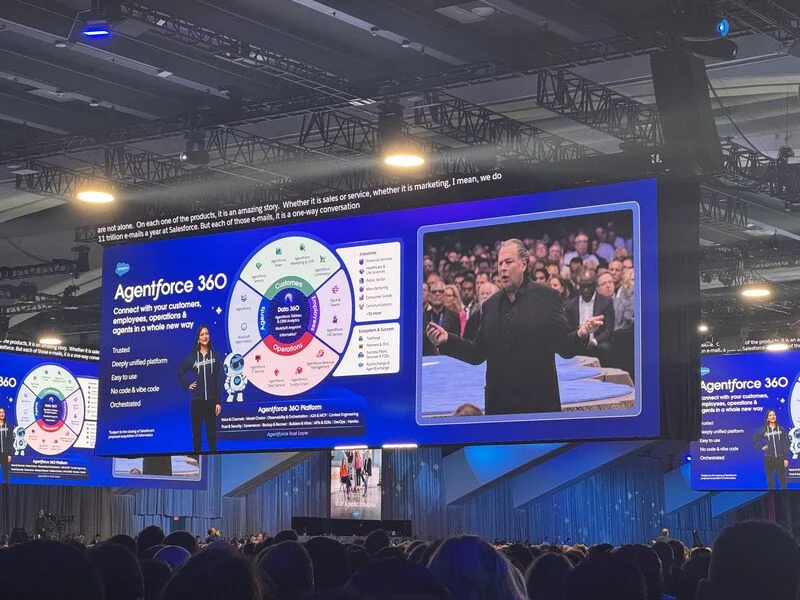How To Attract And Retain Top IT Talent (Part 2)
31 Mar, 20245 minWith above-average turnover rates and a limited pool of qualified candidates affecting the t...

With above-average turnover rates and a limited pool of qualified candidates affecting the tech sector, retaining top IT talent has become a high-priority challenge for businesses striving for innovation and growth. As technological advancements continue to reshape the digital space, the demand for skilled IT professionals will continue to intensify. Organisations must implement robust talent retention strategies to keep hold of the best and brightest IT specialists.
Part one explored the various strategies businesses should adopt to attract top IT talent. In part two, we’ll explore the key actions companies should take to ensure that all-important IT professionals choose to remain at their organisations. By following our expert guidance, your business will be well-equipped to attract and retain the outstanding IT experts you need to guarantee sustained prosperity amid an increasingly competitive market.
Top Talent Retention Strategies For Securing IT Talent
Hiring top-quality candidates for IT jobs is no easy feat, not least due to unwelcome tech recruitment trends such as a lack of suitable candidates, challenges associated with keeping up with technological change, and a growing demand for IT talent. As we discussed in part one, attracting outstanding candidates undoubtedly requires a well-thought-out approach, but with the right strategies in place, companies can rest assured that top talent will be encouraged to apply for their IT roles.
However, retaining IT talent presents its own unique set of challenges. The turnover rate among IT professionals is reported to be approximately 13.2%, a concerningly high level indicating that talent retention is a pressing issue for the IT sector. Rather than focusing on the bleak outlook that figures such as these convey, tech companies should instead invest their time and effort into pursuing meaningful strategies that enable them to keep hold of their most valued IT employees.
Here are the key methods your business should employ to retain tech talent:
1. Invest in Innovative Technology and Projects
While developing a strong brand identity and offering competitive packages are undoubtedly crucial methods for attracting IT talent, companies wishing to draw in the best and brightest candidates must provide something truly distinctive. Investing in cutting-edge technology can act as a magnet for ambitious IT professionals motivated by the opportunity to participate in projects that drive technological innovation.
With companies and institutions planning to invest significantly in digital technology in the coming years, it is imperative that your organisation devotes financial resources to innovative technology, both for attracting tech talent and securing long-term success. By failing to do so, you’ll run the risk of losing your competitive edge and not keeping up with the rapid pace of technological change.
Staying up with the latest trends and developments in the tech world can help you identify new and emerging technologies that you should invest in. While your investment decisions are dependent on your company’s specific needs, here are the most influential technologies you may consider investing in:
- Artificial intelligence and machine learning
- Virtual reality and augmented reality
- Internet of Things
- Cybersecurity tools
According to a McKinsey report on attracting, retaining, and developing top IT professionals, top candidates in the field care about working with new technologies, and companies at the forefront of the technological revolution are more appealing to them. Investing in the latest tech will help carve out a reputation as a thought leader in the tech industry, attracting passionate IT specialists with the skills to make a difference in this exciting, fast-paced sector.
2. Provide Development and Learning Opportunities
With the competition for IT talent becoming ever-more intense, tech companies have to go the extra mile to motivate outstanding IT professionals to remain at their organisations. Of all the many workplace incentives, there are two perks in particular that a significant portion of tech talent values - career development and learning opportunities.
According to a study conducted by Indeed, 91% of tech workers claim the opportunity for learning and education is the most important aspect they look for when applying for new roles. Interestingly, the respondents also said that they’d be willing to accept a lower salary in exchange for other factors, two of which were career advancement and learning initiatives.
Yet, despite the popularity of these perks, many companies appear to lag behind when it comes to facilitating these opportunities. Research from Devlin Pack reveals that 59% of workers, particularly in the tech industry, claim to receive zero workplace training. Although this figure highlights that the tech sector needs to do more to provide learning and development programs, it also suggests that there is a golden opportunity to be seized.
If you are looking to boost your IT talent retention levels, what better way than to implement a series of career development and learning initiatives that are the envy of your competitors?
With retention 34% higher among employees with the opportunity for professional development, deciding to invest in training and development programs for your IT staff would be a forward-thinking step.
Let’s explore the top tips you should follow when providing learning and development opportunities for your IT talent:
- Develop Tailored Learning and Development Paths: It is key to provide your employees with custom learning and development plans that consider their unique needs, interests, and ambitions. It’s important to bear in mind that not all IT professionals have the same learning style and training needs, so personalisation is important.
- Offer a Variety of Training Formats: Diversifying training formats is a great way to cater to a wide range of learning styles and preferences. You can incorporate various training formats into your learning programs, including workshops, seminars, online courses, mentorships, on-the-job training, and webinars.
- Encourage Continuous Learning: Promoting a culture of continuous learning is an effective method for showing your IT staff that you are invested in their professional development. To solidify your reputation as an employer that genuinely cares about your staff’s progress, empowering them to pursue certifications, attend conferences, and seek new skills is essential.
- Facilitate Hands-On Projects: Facilitating hands-on projects and challenges should be fundamental to your learning and development program. By allowing your team to partake in projects that simulate real-world scenarios, you’ll be equipping them with valuable skills they can apply to their everyday tasks. Suitable projects include hackathons, code reviews, and problem-solving challenges.
3. Facilitate Flexible Working Arrangements
The Covid-19 pandemic changed the way we work, with remote and hybrid working models becoming the norm. Even after governments lifted public health restrictions, many companies continued with their flexible working arrangements. For many professionals, particularly in the IT sector, flexible working has become a non-negotiable part of working life.
By offering flexible working arrangements for your IT talent, companies can retain top employees, foster a positive work culture, and remain competitive in a dynamic job market. And given that a staggering 9 in 10 employees consider flexible working to be a key motivator in their productivity at work, introducing a flexible working policy is arguably one of the most effective talent retention strategies.
So, what are the best ways to go about implementing a successful flexible working policy? Introducing such an initiative isn’t merely a case of rushing through a set of general guidelines. Rather, it requires a strategic, thoughtful approach that considers the needs and preferences of your IT team. Here are the steps you should take to ensure a successful flexible work policy:
Understand the Needs of Your IT Talent
At the outset, you should strive to understand your IT team’s preferences in-depth. You can gauge their interest in flexible working arrangements, preferred hours, and remote work possibilities in a number of ways, such as conducting surveys or holding team discussions. Once you have gathered this information, you can begin to craft your policy details.
Create a Detailed, Coherent Policy
The next step is to develop a clear and comprehensive flexible work policy that outlines guidelines, expectations, eligibility criteria, and procedures for requesting and implementing flexible arrangements. Before you finalise the small print, be sure to check that your policy aligns with your company culture and any relevant pieces of legislation.
Prioritise Communication and Transparency
When you have decided on a flexible work policy, you need to communicate the details of it effectively to your team. You should explicitly outline its purpose, advantages, and how it aligns with your company’s mission and goals. Be sure to address any questions or concerns that your IT professionals may have about the new policy.
Offer a Variety of Options
Flexible working does not just refer to being able to work at home; the term encompasses a range of other aspects, including flexible hours, compressed workweeks, and job sharing. To ensure that your policy appeals to as many people as possible, you should offer a range of flexible working options. Striking the balance between flexibility and ensuring that your company's operational needs are met is key.
Provide Cutting-Edge Technology
As an employer, it is your responsibility to make sure that your tech talent has the right tools for the job. Therefore, you should aim to ensure that your IT infrastructure is robust enough to support remote work. Be sure to provide the necessary tools, software, secure network access, and tech support to enable seamless remote collaboration and work.
4. Establish a Recognition and Reward Program
Last up on our list of talent retention strategies is establishing a recognition and reward program. In a tight, candidate-led job market where companies need to go above and beyond to keep IT talent on side, incentivising top performers by acknowledging and rewarding their achievements is paramount. According to a survey by the Society for Human Resource Management, employee recognition programs have a positive impact on employee engagement, job satisfaction, and, crucially, retention rates.
And that isn’t the only piece of research that supports the notion that recognition programs correlate with higher levels of talent retention. A study by Achievers revealed that companies with effective recognition programs had 31% lower turnover rates than those without. Motivating your team by recognising their accomplishments will not only encourage them to remain at your organisation, it will also incentivise them to achieve greater levels of productivity, ensuring that your business objectives are met.
Before implementing a recognition scheme, it’s important to get a sense of your team’s preferences by conducting surveys or interviews. Some team members might prefer monetary rewards, while others may prefer additional training opportunities or work-life balance benefits. Another top tip is to customise rewards, tailoring them to match the specific preferences of each employee. You may also consider monitoring and evaluating the effectiveness of the program to see how well it has improved retention rates and other metrics.
Part Two Of How To Attract And Retain IT Talent: Key Takeaways
Retaining top IT talent remains a fundamental challenge for businesses aiming for sustained growth and innovation in an increasingly competitive tech landscape. Part two of this two-part guide has delved into essential strategies that organisations should embrace to ensure the retention of their valuable IT professionals.
Investing in innovative technology, providing robust learning and development opportunities, implementing flexible working arrangements, and establishing a comprehensive recognition and reward program are vital components in fostering a work environment where top IT talent feels valued, engaged, and motivated to contribute their best.
By strategically implementing these talent retention strategies, companies can attract exceptional IT professionals and create an environment that encourages their continuous growth, nurtures their skills, and acknowledges their contributions. As technological advancements continue to shape the industry, businesses that prioritise and invest in retaining their IT talent will undoubtedly strengthen their competitive edge.
Specialists in Connecting Tech Talent with IT Jobs
At MA, our consultants are passionate about helping tech companies recruit outstanding candidates for their crucial IT jobs. We understand the difficulties involved in hiring top-tier IT talent, and through our expertise, you’ll be able to secure the candidates you need to ensure long-term success at your organisation. Whether you are looking for an experienced IT professional or an ambitious graduate, we’ll utilise our industry-leading services to provide you with the support you need to meet your hiring goals.
Get in contact with us today to learn more about how our award-winning agency can help you.



